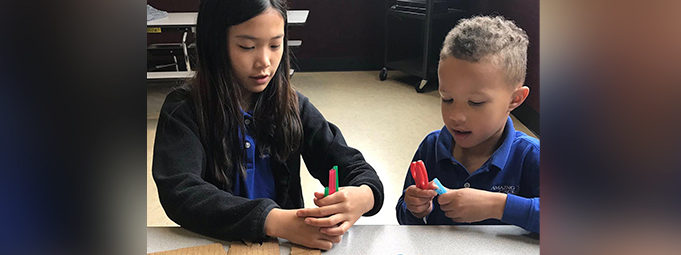
Implementing design thinking in teaching methods truly connects educators to their students. It has the capacity to unite empathy with creativity to allow teachers and students to contribute their very best. It is more than just innovation, it is creating ideas while keeping the needs of your consumer or audience in mind. How can you carry out design thinking to effectively solve problems? More importantly, how can we use it to the advantage of education?
The purpose behind effective design thinking is to develop a creative and innovative approach to solving problems. It involves sharing ideas from the bottom up to produce a change that carries value. The great thing about design thinking is that it pushes students to take action. Rather than being given a problem they have to find a solution for, design thinking gives students the opportunity to find solutions to issues they are passionate about. It involves working together to identify a problem, then solving it. Students can see that there is no right or wrong answer, but instead, plenty of different yet effective solutions. As we share challenges and lead by example, we are together becoming better.
In Dr. Michelle Zimmerman’s book Exploring AI, she shares the many ways that our students practice artificial intelligence and design thinking. At Renton Prep, our 1st grade cohort put together a STEM & Design Thinking project to prepare for the STEAM Fair. They planted seeds to grow their very own vegetable garden! This project provides a great example where our students worked on developing solutions for bigger problems.
Every student and teacher can carry out design thinking in their own unique way. Whether emphasis is put on sharing ideas or solving problems, both play a critical role in the overall process. Generally, design thinking can be broken down into a 5 step process:
The first stage involves obtaining an empathetic understanding of the problem you want to solve by sharing any ideas or concerns you may have. Empathy is being able to grasp and take into consideration the feelings of another. It is one of the most important qualities that constitute design thinking. Secondly, comes defining the problem and analyzing your observations. After developing the problem(s), you and your team are able to ideate, in other words, form ideas to start building your solution. This is where brainstorming comes to play. Next, build up a representation of your ideas. This can be done by sketching or developing prototypes of possible solutions. Lastly, put your prototypes to the test. Which route best solves your problem?
Every day, design thinking is enhancing both in-class and out-of-class experiences for all students, parents, and educators. In addition to guiding students through authentic problem solving challenges, design thinking also has the capacity to enhance schools themselves. More specifically, we can implement the 5 step process to improve the overall effectiveness of schools’ regulations or guidelines. Renton Prep teachers are experimenting in different ways how to get our students familiar with a design thinking mindset. Preparing them now is what will make them the next generation of great leaders. Learn more about our school and contact us today to enroll your child!